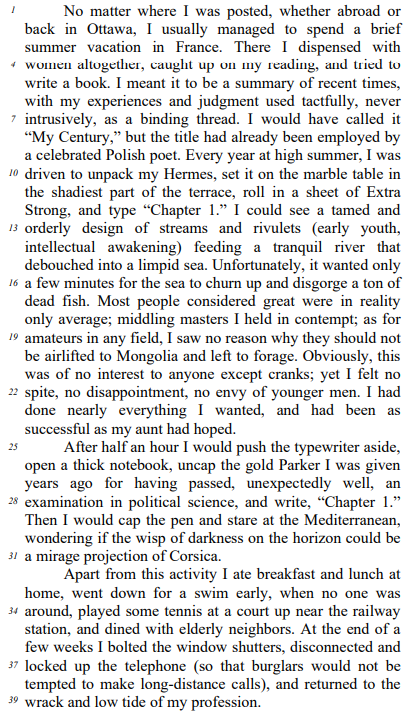Questões de Concurso Comentadas por alunos sobre interpretação de texto | reading comprehension em inglês
Foram encontradas 6.160 questões
Resolva questões gratuitamente!
Junte-se a mais de 4 milhões de concurseiros!
Keeping in mind the ideas expressed above and the linguistic aspects of the text, judge the following item.
According to third paragraph of the text, more than
220 million students registered on MOOC platforms during
the so called “Year of the MOOC” — 2021.
Keeping in mind the ideas expressed above and the linguistic aspects of the text, judge the following item.
The text can be described as an introduction to a definitive
list of countries that offer MOOCs.
Keeping in mind the ideas expressed above and the linguistic aspects of the text, judge the following item.
The verb “prompted” (in the second sentence of the third
paragraph) conveys the same idea as restrained.
Leia o texto para responder às questões de números 47 a 50.
We commonly observe in second language learners a plethora of errors attributable to the negative transfer of the native language to the target language. There can be interlingual interference at the phonological, syntactic, lexical, and semantic levels of language. For example, one might find a beginner learner who says “I am in New York since January”. Examples of distinctions at the lexical level may be seen in false cognates.
The early stages of second language learning are characterized by a predominance of interference (interlingual transfer), but once learners have begun to acquire parts of the new system, more and more intralingual transfer – generalization within the target language – is manifested. Negative intralingual transfer or overgeneralization is seen in such utterances as “Does John can sing?” or “He goed”.
A number of different categories for description of errors have been identified in research on learner language, among them:
I. The most generalized errors of addition, omission, substitution, and ordering. In English, for example, a definite article can be omitted (I went to movie), or an item substituted (/ lost my road), or a word order confused (I to the store went).
II. Within each category, levels of language can be considered: phonology or orthography, lexicon, grammar, and discourse. Often, of course, it is difficult to distinguish different levels of errors. A word with a faulty pronunciation, for example, might hide a syntactic or lexical error.
III. Errors may also be viewed as either global or local. Global errors hinder communication; they prevent the hearer from comprehending some aspect of the message. Local errors do not prevent the message from being heard, usually because there is only a minor violation of one segment of a sentence.
(BROWN, D. Principles of Language Learning and teaching. Englewood Cliffs, NJ: Prentice Hall Regents, 1994. Adaptado)
Assinale a alternativa em que há um erro decorrente de overgeneralization na construção da pergunta.
Text to answer the question.

GALLANT, Mavis. Let it Pass. In: Montreal Stories.
Toronto: McClelland & Stewart, 2004. (adapted)
Based on the text, mark the statements below as right (C) or wrong (E).
The word “contempt” (line 18) can be correctly replaced
with disdain.